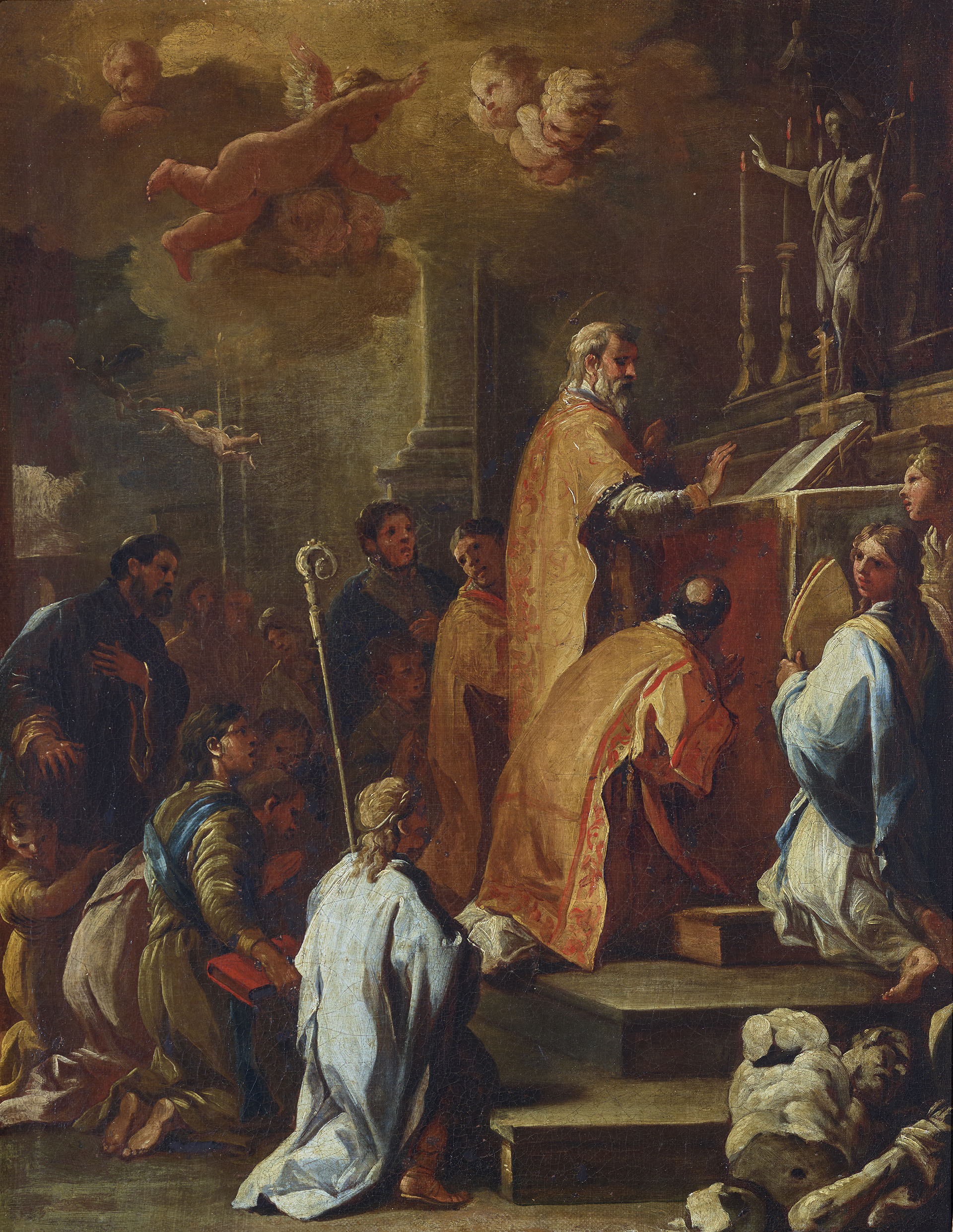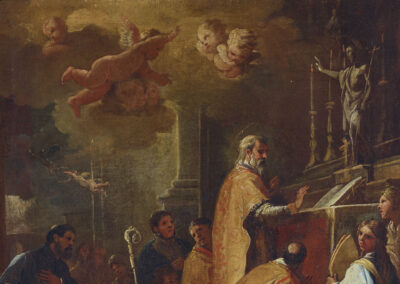Under numbers 20 to 23, the inventory of paintings made on the death in 1716 of Francisco de Benavides Dávila y Corella, IX Count of Santisteban, recorded "...".Four paintings of Saint Gregory celebrating"All of them attributed to Lucas Jordán by the painter and treatise writer Antonio Palomino, his appraiser. It should be noted that in all four paintings this pontiff and Father of the Church is depicted celebrating mass, which gives an idea of the importance of this classical theme, "...".St Gregory's MassThe "Eucharistic doctrine of transubstantiation" was granted to him by the Counter-Reformation church as a defence of the Eucharistic doctrine of transubstantiation.
This painting depicts Pope Gregory I at the moment when his prayers are answered and he receives the sign he was asking God for in order to convince a faithful who doubted the real presence of the body and blood of Christ in the Eucharist and, consequently, the efficacy of the Eucharistic prayer in converting the substance of the species, the bread and wine, into the substance of the body and blood of Christ, the sign requested being the appearance, in full consecration, of the image of Christ on the altar. Normally he does so as the Man of Sorrows, but in this case, the iconography seems to be closer to that of a Resurrectionist. In some versions, the doubter is a deacon and in others a woman, as seems to be the case here, in which the unbeliever could be identified with the woman who, stupefied, holds a thick book in her right hand. As an iconographic complement, the artist draws a fallen idol in the lower right corner.
It is possible, although we do not know the whereabouts of the other three canvases, that each of the four paintings of identical size mentioned in the inventory represented a version of the same theme, and even that they were all preparatory sketches for a larger unrealised painting, which would explain the small size of this work and its somewhat sketchy nature, although none of the inventories describe the series as "erasures".


